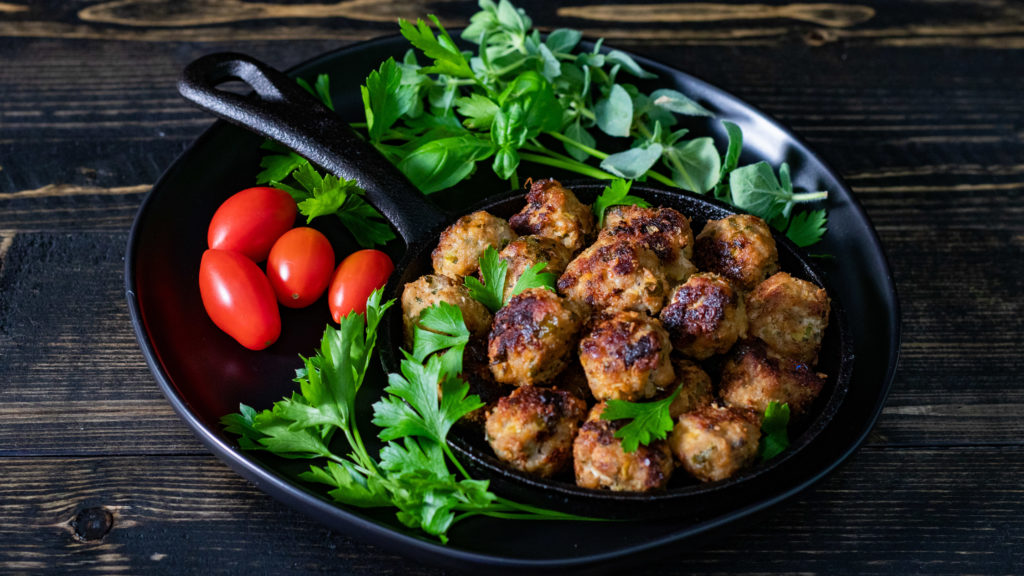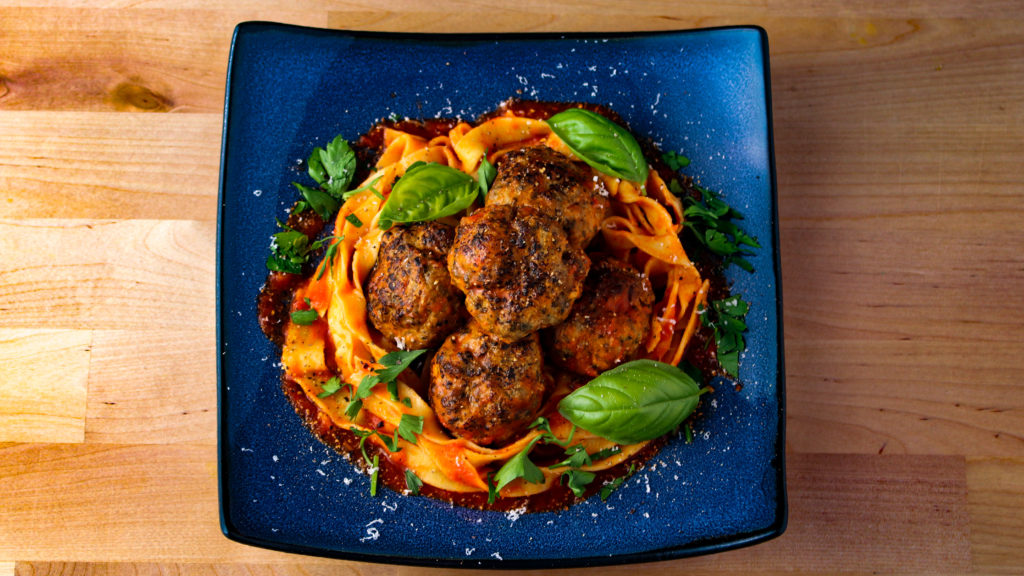Here’s some stuff you need to know about REAL Italian Meatballs, or “Polpette” if you wanna be really authentic and sound smart.
- This whole thing where Americans put meatballs in red sauce and put them on top of pasta? Not Italian. Totally, 100% traditional Italian American which is effing awesome, but it’s not how they do in the motherland.
- In Italy, they serve meatballs as a snack, sans sauce most of the time.
- Traditional Italian Meatballs have more than one kind of meat in them. Usually some combo of pork and beef. Or beef and veal, if you’re not worried about that sort of thing, and can afford it. Or some kind of sausage or other pre-processed amazing meat. The point is, they’re complex, lovely little balls of awesome on their own, no sauce nessa.
So, why did things change? Why are Italian-American meatballs different from the original Polpette? Well, I shall tell you.
The evolution of polpette into Italian American meatballs
Around the time of mass Italian migration food in Italy, specifically meat, was stupidly expensive if you didn’t grow or raise your own, or know a guy. So, in an effort to use every last bitty bit of that precious meat, folks would make meatballs from the ground up affordable scraps.
Placing the meatball in its actual context in Italy means it was (and is still treated as) a delicacy. These little polpette were small, typically made from veal or beef, grated cheese, delicious herbs and some kind of bread filler. They were the stars of the show, in and of themselves, no perfectly-formed nest of pasta necessary.
Then these folks arrived as immigrants in America, where food was really effing cheap. Even really decent quality cuts of beef and veal were more accessible to many immigrants than they had been in the motherland. This largesse translated into bigger quantities of meat used in the meatballs and, as their size grew, they transformed from a wee savory amuse bouche into a much larger main course.
Which leads us to another big question:
Why serve Meatballs in “Marinara” sauce?
Well, I mean, why the hell not? They go great together! But in reality, it was a matter of practicality that drove the balls into the saucy sauce.
As we mentioned above, meatballs started getting bigger and bigger. Quick frying a wee polpette in a frying pan is one thing, but getting the inside of a giant, dinner-sized meatball cooked that way without charring the outside would have been extremely hard. So folks started browning them in a pan and then tossing them in marinara sauce to finish cooking. Or, even better, browning them off in the pan before adding the other sauce ingredients so that that delicious crispy fond didn’t go to waste.
Spaghetti and Meatballs in American Cuisine
The dish we know and love as spaghetti and meatballs solidified it’s place in American cuisine in the 1930s when Ettore Boiardi (Known to you as Chef Boyardee,) started mass producing his spaghetti and meatballs and selling it in cans.
So now, when all us Americans and even the descendants of these gifted folk think of meatballs, you think of delicious balls of meat and bread crumbs poached gently in a luscious red sauce that has hints of what the original marinara was. And that is awesome.
But if you go to Rome and ask the proprietor of that cool piazza-side trattoria for some marinara to go along with the small, perfectly fried jewels of meat he places before you, expect a side of snide sufficient to make the French blush with envy.
Polpette are not Meatballs, though both are balls of meat. Remember that, friends.
Bon appetit!




Leave a comment